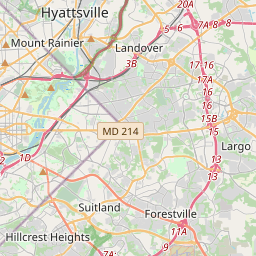American Revolution American Red Maple
Historical marker location:






1765: The Stamp Act is passed by the British Parliament, imposing a tax on American colonists for various printed materials. This sparks widespread protests and resistance among the colonists.
1770: The Boston Massacre occurs when British soldiers fire on a crowd of American colonists in Boston, resulting in the death of five colonists. The event further escalates tensions between the colonists and British authorities.
1773: The Boston Tea Party takes place as colonists, disguised as Native Americans, dump tea from British East India Company ships into Boston Harbor in protest against the Tea Act.
1774: The First Continental Congress convenes in Philadelphia. Delegates from twelve of the thirteen colonies gather to discuss grievances against British policies and plan a united response.
1775: The Battles of Lexington and Concord mark the beginning of armed conflict between British troops and American colonial militia. The "shot heard 'round the world" ignites the Revolutionary War.
1776: On July 4, the Second Continental Congress adopts the Declaration of Independence, drafted primarily by Thomas Jefferson. The document asserts the colonies' independence from Britain and outlines the principles of individual rights and self-government.
1777: The American victory at the Battle of Saratoga in New York proves to be a turning point in the war. It convinces the French to openly support the American cause and enter the war as allies.
1778: The Treaty of Alliance is signed between the United States and France, formalizing their military alliance. France provides crucial support to the American forces, including troops, naval assistance, and financial aid.
1781: The Siege of Yorktown takes place in Virginia, where combined American and French forces, led by General George Washington and French General Rochambeau, successfully trap British General Cornwallis and his troops. Cornwallis surrenders on October 19, effectively ending major hostilities in the Revolutionary War.
1783: The Treaty of Paris is signed, formally ending the American Revolutionary War. Great Britain recognizes the independence of the United States and establishes its boundaries. The treaty also grants fishing rights to American fishermen in the waters off Newfoundland and Nova Scotia.
1787: The Constitutional Convention convenes in Philadelphia to draft a new constitution to replace the Articles of Confederation, which proved ineffective in governing the newly independent nation.
1788: The United States Constitution is ratified by the required number of states and goes into effect. It establishes a strong federal government with separate branches and a system of checks and balances.
1789: George Washington is inaugurated as the first President of the United States, and the new federal government is established in New York City.
This timeline provides a general overview of the major events during the American Revolution, but it is important to note that there were numerous other battles, diplomatic negotiations, and developments that occurred during this period.
The first slave ship to arrive in the American colonies landed in Virginia in 1619. Virginia became a center of the transatlantic slave trade, and by 1860, Virginia had the largest population of enslaved people in the United States.
In 1801, the federal government acquired land along the Potomac River to establish the District of Columbia, including what is now Arlington County. However, in 1846, the portion of the land on the Virginia side of the river was retroceded back to Virginia due to political tensions between the southern states and the federal government.
During the American Civil War, Arlington County played a significant role. The area was turned into a military encampment and eventually became the site of Arlington National Cemetery, where Union soldiers were buried. After the war, the land was returned to its original owner, George Washington Custis Lee, the grandson of George Washington. In 1871, the government purchased the land from Lee's family, and the cemetery continued to grow.
In the 20th century, Arlington County experienced rapid suburbanization and urban development. The construction of the Pentagon in the 1940s and the expansion of federal agencies led to an influx of residents and increased economic activity. Today, Arlington County is known for its vibrant communities, bustling urban centers, and close proximity to Washington, D.C. It is also home to numerous landmarks, including the Pentagon, Arlington National Cemetery, and the Marine Corps War Memorial.
Arlington County Timeline
This timeline provides a condensed summary of the historical journey of Arlington County, Virginia.
- 1600: Native American tribes, including the Doeg and Nacotchtank, live in the area now known as Arlington County.
- 1634: English settlers establish a trading post near present-day Rosslyn.
- 1801: The United States purchases the land that will eventually become Arlington County as part of the District of Columbia.
- 1846: The portion of the District of Columbia west of the Potomac River is returned to Virginia due to legislation passed by Congress.
- 1861: The American Civil War begins.
- 1864: Arlington House, belonging to General Robert E. Lee, is seized by the Union Army and becomes the site of Arlington National Cemetery.
- 1920: The name of the county is changed from Alexandria County to Arlington County.
- 1954: Integration of public schools in Arlington County takes place following the Supreme Court's ruling in Brown v. Board of Education.
- 1970s: Arlington County experiences significant growth in population and urban development.
- 2001: The Pentagon is damaged during the September 11 terrorist attacks.